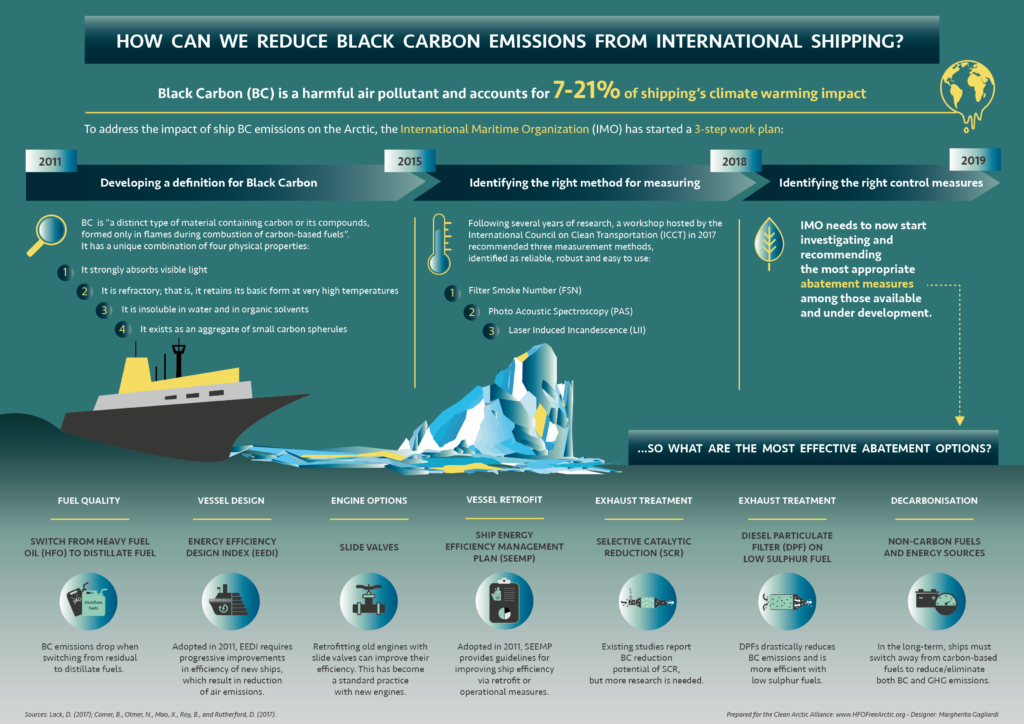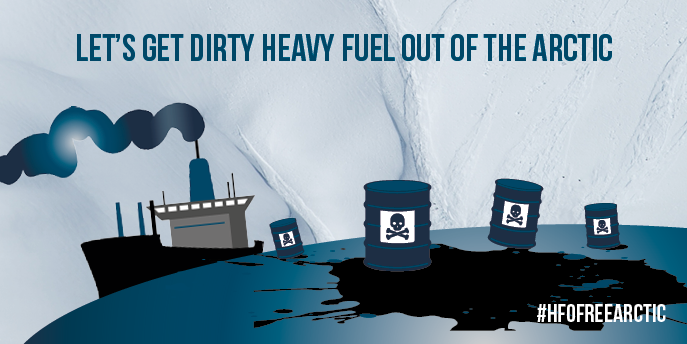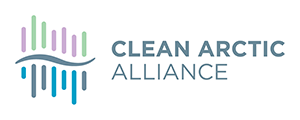Arctic Shipping Commitment Drives Momentum Towards Heavy Fuel Oil Ban
n ambitious campaign for a ban on heavy fuel oil (HFO) from Arctic shipping has successfully harnessed the power and influence of 65 companies, organisations, politicians and explorers, since its launch in Tromsø twelve months ago.
Infographic: How Can We Reduce Black Carbon Emissions From International Shipping?

To address the impact of ship Black Carbon (BC) emissions on the Arctic, the International Maritime Organization (IMO) has been tasked with developing a definition for black carbon, deciding on best methodology for measuring black carbon, and identifying abatement options. A considerable number of black carbon abatement options exist with varying reduction potential of BC emissions. Some are readily available, some in development, some expensive, some cheaper. This infographic goes through some of the most effective abatement options and depicts their advantages and drawbacks based on the most up to date scientific literature.
Clean Arctic Alliance response to new record volume of goods shipped on the Northern Sea Route

With the next meeting of the IMO’s Marine Environment Protection Committee coming up in April, we’re calling on member states to back a ban on the use of heavy fuel oil – the dirtiest from shipping fuels – from vessels operating in Arctic waters.
Clean Arctic Alliance Response to EU Parliament Ocean Governance Vote

The Clean Arctic Alliance welcomes the adoption of the European Parliament Resolution on international ocean governance, and in particular its commitment towards ending the use of heavy fuel oil and its carriage in fuel tanks in Arctic shipping. The EU parliament’s position is further evidence that heavy fuel oil use in the Arctic is no longer acceptable – its presence in the Antarctic has been prohibited for some years, and last year the International Maritime Organization began moves towards its phase out. It is now imperative that the risks associated with burning HFO and carrying HFO fuel are eliminated in the Arctic

